Discover The Mesmerising Serenity Of Ross Island In Andaman
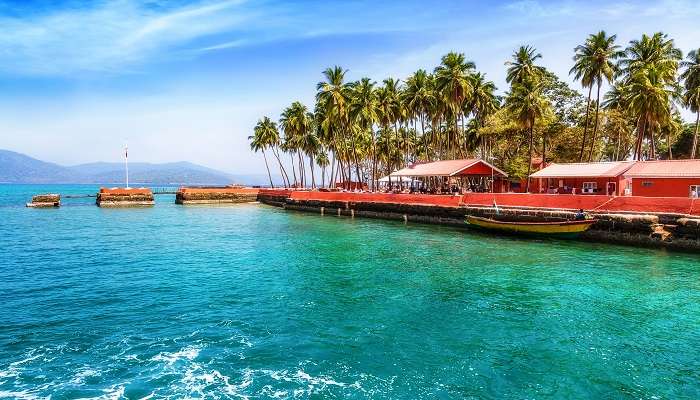
A stunning reminder of India’s colonial past, Ross Island is in the middle of the Bay of Bengal. During the British colonial era, this little island, located near Port Blair, served as the administrative centre for the British. Its overgrown woodlands and decaying ruins are quiet reminders of a bygone age, calling tourists like you to travel back in time and discover a piece of history. The first thing that hits you as you approach Ross Island in Andaman is the strange calm that permeates the area. The smell of tropical flora fills the air, and the sound of the waves gently lapping against the coast creates a calming atmosphere.
Ross Island In Andaman: An Overview
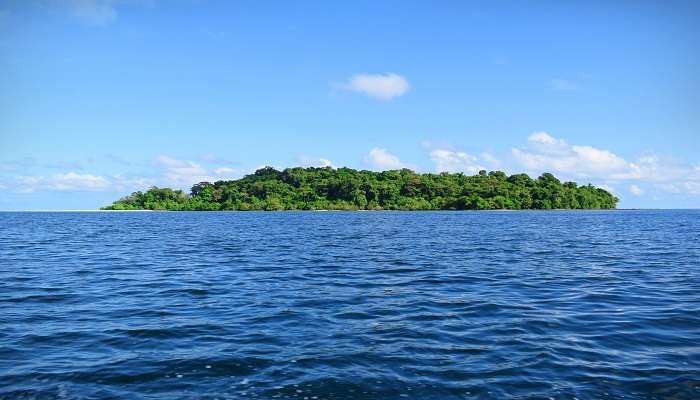
Ross Island is part of the Andaman Islands, specifically the South Andaman administrative district. Its geographical coordinates are 11.675°N latitude and 92.763°E longitude. It is located 3 Km east of central Port Blair, making it easily accessible for visitors. Once known as the “Paris of the East,” Ross Island served as the administrative headquarters of the British colonial establishment in the Andaman and Nicobar Islands during the 19th and early 20th centuries.
Must Read: Cruises To Andaman
Immersing Into The History
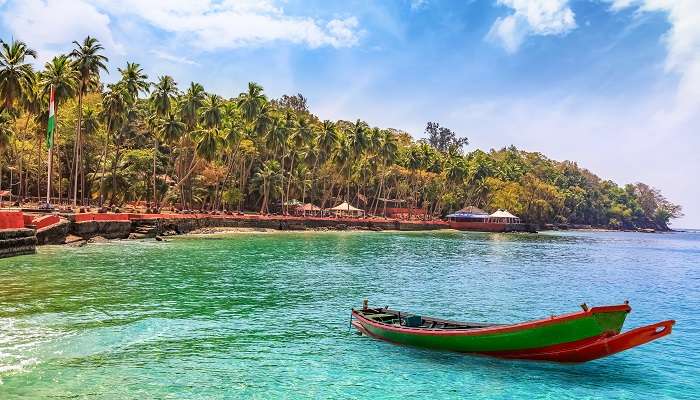
Ross Island in Andaman was named after British marine surveyor Daniel Ross. The history of Ross Island dates back to the 18th century when the British established a settlement by building medical facilities. However, following the Sepoy Mutiny of 1857, the island’s purpose changed dramatically. In 1858, the British Raj established the Ross Island Penal Colony to house Indian political prisoners. This penal colony became the administrative centre for the entire Andaman and Nicobar Islands.
During its colonial era, Ross Island witnessed the construction of various structures like bungalows, a church, a bakery, a hospital, and even a swimming pool, catering to the British residents. However, the island’s fortunes shifted in the mid-20th century. 1942 during World War II, the Japanese captured Ross Island in Andaman. While the British presence dwindled, the island held immense significance for Indian independence leader Subhas Chandra Bose. In 1943, during his visit to Port Blair, Bose made a historic gesture by hoisting the Indian tricolour at the Government House on Ross Island, a moment that resonates with respect and admiration even today.
Following the war, the British recaptured the island but eventually abandoned it in the late 1940s. Today, Ross Island is a fascinating reminder of its colonial past, with its now-ruined structures overtaken by nature. It’s a popular tourist destination in Andaman, a testament to the island’s transformation from a penal colony to a place of historical intrigue, offering a glimpse into a bygone era. In 2018, to honour Indian independence leader Subhas Chandra Bose, the Indian government renamed Ross Island to Netaji Subhash Chandra Bose Dweep. This name change reflects the island’s significance in India’s freedom struggle, particularly Bose’s raising the Indian flag there.
Climate And Weather
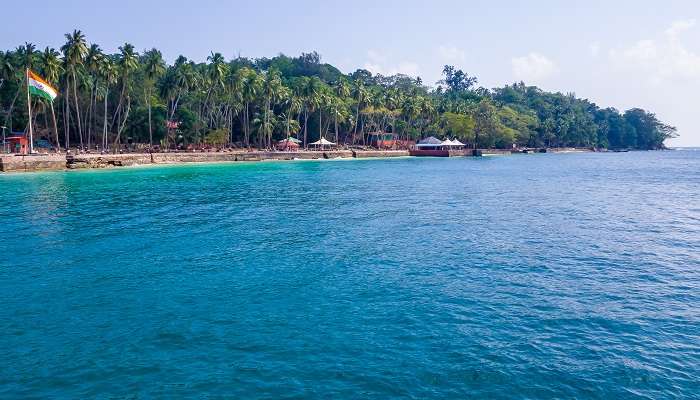
The climate on Ross Island in Andaman is tropical, characterised by high temperatures, humidity, and significant rainfall all year round. The island experiences warm temperatures throughout the year, with average highs fluctuating between 25°C and 32°C (77°F to 90°F). The summer months from April to June are usually the hottest, sometimes exceeding 35°C (95°F). The winter months from December to February are relatively more relaxed, with temperatures ranging from 20°C to 25°C (68°F to 77°F). The island receives moderate to heavy rainfall throughout the year, with an average annual rainfall of 3180 mm.
Suggested Read: Hotels In Havelock
3 Tourist Attractions To Explore On Ross Island In Andaman
There are several tourist attractions to explore on Ross Island in Andaman. Some of them are:
1. British-Era Buildings And Ruins
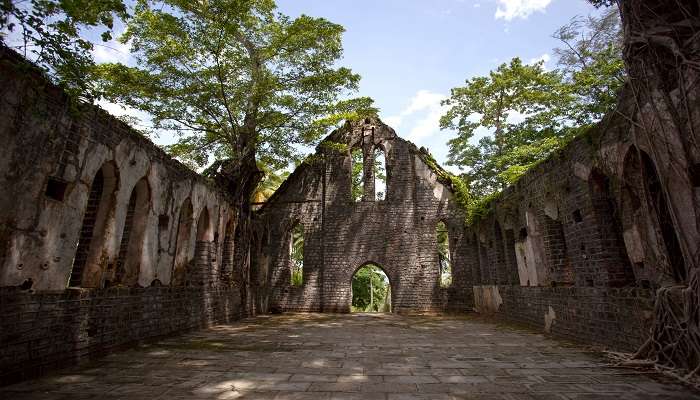
The island’s transformation began in 1788 when the British established their initial settlement in the Andamans. This included the construction of a hospital and infirmary on Ross Island itself. Following the Sepoy Mutiny of 1857, the British incarcerated Indian political prisoners on the island, and Ross Island subsequently flourished as a prominent British colonial settlement for nearly 85 years. During this period, the island witnessed the construction of numerous grand buildings that served as the nerve centre of the British administration. Elegant homes for high-ranking officers, a Presbyterian Church, a bustling marketplace, and a well-equipped hospital were all prominent features of the island. Today, these structures stand in various states of decay, their shells serving as a poignant reminder of the island’s colonial past.
2. Ross Island Museum
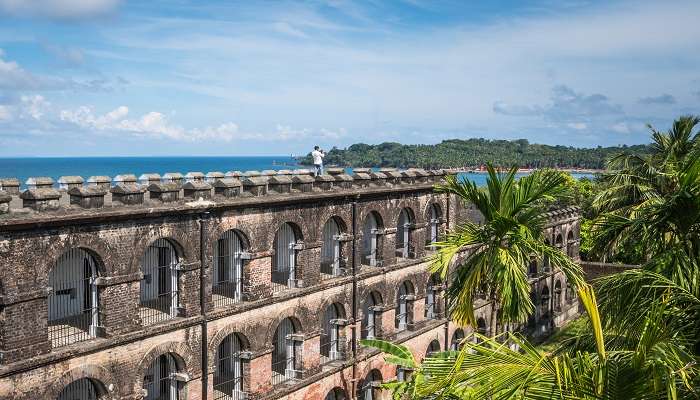
The Ross Island Museum, a quaint establishment, is home to various artefacts and photographs that offer a glimpse into the island’s history and culture. It sheds light on the lives of British officers and the island’s past as a penal settlement. The museum boasts a remarkable collection of antiques and images that narrate the island’s rich history.
Suggested Read: Places To Visit In Neil Island
3. Japanese Bunkers And World War II Remnants
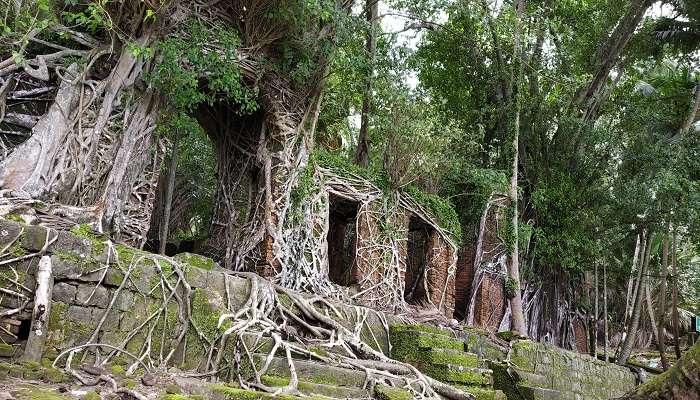
The Japanese Bunkers and World War II Remnants are historical landmarks that bear witness to the past. Built during World War II, these fortified structures served as shelters and strategic points for the Japanese. These remnants narrate tales of fierce combat, tactical defences, and the human toll of warfare.
Best Time To Visit
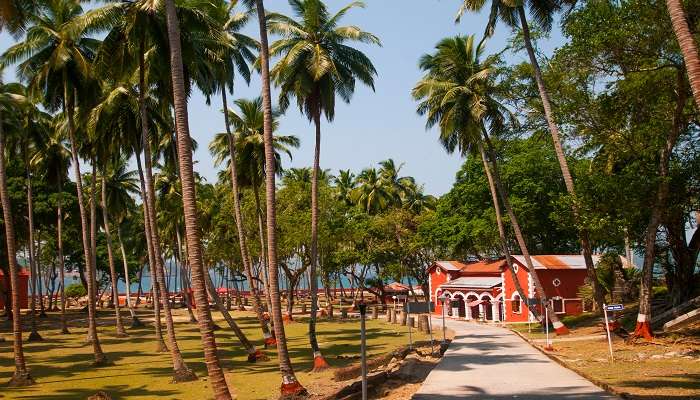
Ross Island in Andaman is best explored from October through March. During these months, the weather is pleasant, and there’s little chance of unexpected rain, which allows for uninterrupted sightseeing. The temperature typically varies between 20℃ and 30℃, perfect for discovering the island’s historical landmarks and natural splendour.
Suggested Read: Resorts In Havelock
How To Get There?
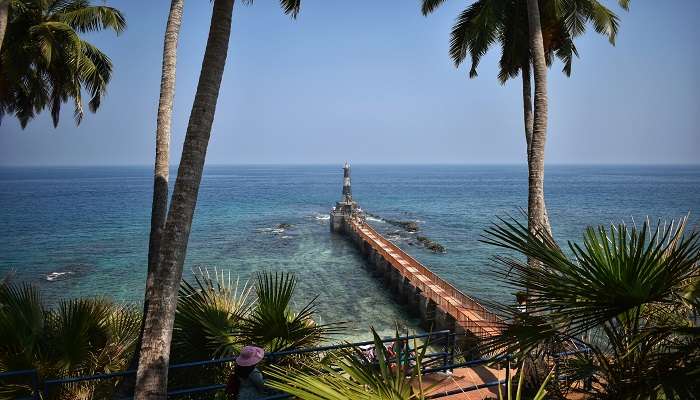
Ross Island in Andaman, located approximately 3 Km east of central Port Blair, is accessible via boat or ferry from various points in Port Blair. Daily ferries depart from the Water Sports Complex and offer combined Ross Island and North Bay Island tours. Alternatively, boats are available from the Phoenix Bay Jetty or the Rajiv Gandhi Water Sports Complex jetty. The Port Blair to Ross Island journey takes about 15 minutes. Private ferries from Phoenix Bay Jetty also provide round-trip options ranging from ₹300 to ₹500.
Further Read: Things To Do In Port Blair
Ross Island stands as a testament to the diverse and fascinating past of the Andaman Islands. Its serene beaches, historical landmarks, and natural wonders create an unforgettable visitor experience. Whether you are a history enthusiast, nature lover, or simply seeking a peaceful getaway, this island promises to leave you spellbound. Are you ready to go on an extraordinary journey and immerse yourself in the magic of Ross Island? So, why wait? Book your trip to Andaman today and unlock a world of adventure, relaxation, and cultural discovery. Plan your trip with your family or friends and create memories that will last a lifetime.
For our editorial codes of conduct and copyright disclaimer, please click here.
Cover Image Source: Shutterstock
Frequently Asked Questions About Ross Island In Andaman
What is Ross Island famous for?
Netaji Subhash Chandra Bose Island, formerly known as Ross Island, is famous for its historical significance and verdant landscapes. It served as the administrative hub during British rule, and the remnants of structures built by Indian prisoners still stand, offering a peek into the past.
Who owns Ross Island?
In southwest Portland, Ross Island sits in the center of the Willamette River. Ross Island Sand and Gravel, a business that has been mining river gravel there since the 1920s, owns the most of it.
How much is the ticket from Port Blair to Ross Island?
The ferry fare from Port Blair to Ross Island varies. The entry fee is 50 for adults (above 9 years) and Rs 25 for children. The boat fare is Rs 100 for all.
How much time is required for Ross Island?
A trip to Ross Island typically takes about 2 to 3 hours. This gives you enough time to explore the ruins, watch the light and sound show, and appreciate the natural beauty.
Why is it called Ross Island?
The island was named Ross Island after Daniel Ross, a British marine surveyor. In December 2018, it was renamed Netaji Subhas Chandra Bose Island in honour of the Indian freedom fighter Netaji Subhas Chandra Bose.
People Also Read:
Philippines Islands Ibo Island Havelock Island

Get ready to wander the world through amazing visual tours that we provide via our blogs and stories. As a content writer, I love sharing incredible travel experiences that inspire readers to plan their own adventures and create unforgettable memories. From planning to execution, everything has already been served in these amusing tales. Let’s explore the world together, one destination at a time!











